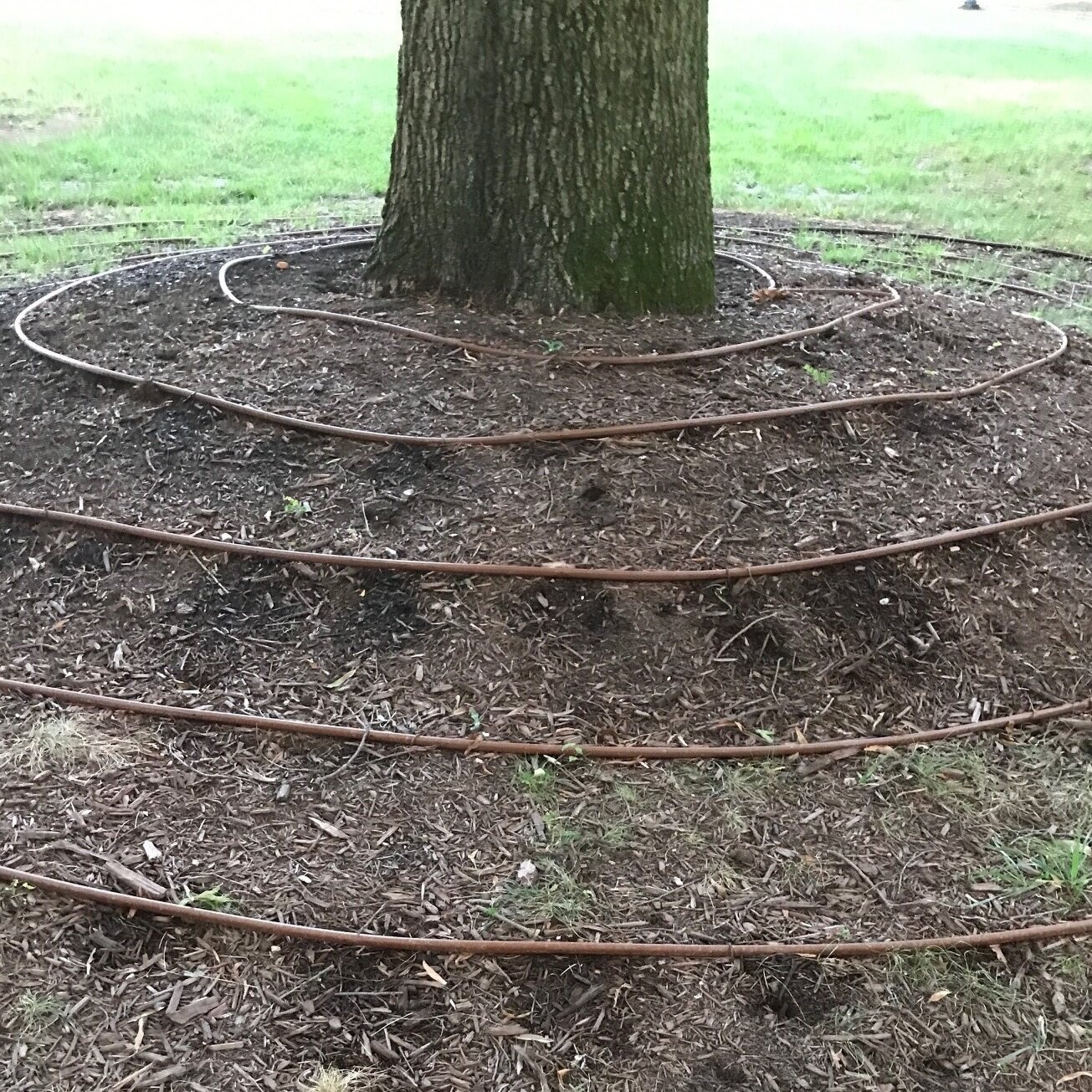DC's regulations require that a tree transplant candidate be root pruned (cutting off approximately 80% of the roots), then watered and nurtured for at least a year to make sure it is capable of withstanding the shock.

Saving Heritage Trees
In January 2019, three enormous trees rolled along Wisconsin Avenue in Washington, DC to their new home. Wetland Studies and Solutions, Inc.’s Tree Preservation Specialists began planning more than a year before the tree relocations, working with the design, construction, transplant, and maintenance teams in conjunction with DC staff to ensure the trees thrive. A 35” DBH (diameter at breast height) Heritage-sized willow oak, a 36” DBH Heritage-sized pin oak, and a 28” DBH Special-sized northern red oak were displaced by multi-use redevelopment of the former Fannie Mae site at 3900 Wisconsin Avenue NW, now the site of the City Ridge development. Another 36” DBH pin oak remained in its original location, and WSSI has provided design review, protection measures, and stress reduction measures to ensure its health.
WSSI continues to work with the team to ensure the trees thrive . WSSI is also providing erosion and sediment control consulting and inspections during the project construction to support good stormwater management and environmental protection.
City Ridge’s developer, NASH Roadside, LLC, was faced with DC’s 2016 updates to urban forestry preservation regulations requiring all non-government projects to save Heritage Trees (100” or more trunk circumference (DBH of more than 31.8”)) and Special Trees (44-99.9” circumference (14-31.8” DBH)) in place or relocate them to a “safe” spot. The trees must also be successfully maintained for three years or face a hefty fine. This was the first development under the new law to have plans and permits approved and move the trees. Read more about DC’s Heritage Tree regulation in our January 31, 2019 Field Notes article.
If you are developing projects in Washington, DC with mature trees, our Urban Forestry team can help you identify Heritage Trees and Special Trees, and assess whether transplanting such trees is a viable solution on your site. For more information, please contact us here.
All three trees are thriving after transplant; this is the heritage-sized willow oak with its protective perimeter fencing, June 2019.
Careful planning and teamwork were critical for the successful operation.


